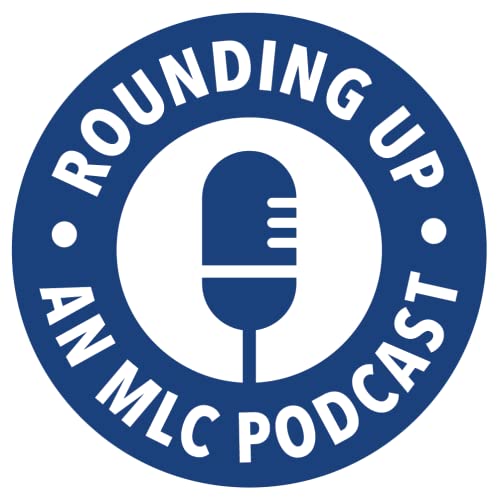Christy Pettis & Terry Wyberg, The Case for Choral Counting with Fractions ROUNDING UP: SEASON 4 | EPISODE 6 How can educators help students recognize similarities in the way whole numbers and fractions behave? And are there ways educators can build on students' understanding of whole numbers to support their understanding of fractions? The answer from today's guests is an emphatic yes. Today we're talking with Terry Wyberg and Christy Pettis about the ways choral counting can support students' understanding of fractions. BIOGRAPHIES Terry Wyberg is a senior lecturer in the Department of Curriculum and Instruction at the University of Minnesota. His interests include teacher education and development, exploring how teachers' content knowledge is related to their teaching approaches. Christy Pettis is an assistant professor of teacher education at the University of Wisconsin-River Falls. RESOURCES Choral Counting & Counting Collections: Transforming the PreK-5 Math Classroom by Megan L. Franke, Elham Kazemi, and Angela Chan Turrou Teacher Education by Design Number Chart app by The Math Learning Center TRANSCRIPT Mike Wallus: Welcome to the podcast, Terry and Christy. I'm excited to talk with you both today. Christy Pettis: Thanks for having us. Terry Wyberg: Thank you. Mike: So, for listeners who don't have prior knowledge, I'm wondering if we could just offer them some background. I'm wondering if one of you could briefly describe the choral counting routine. So, how does it work? How would you describe the roles of the teacher and the students when they're engaging with this routine? Christy: Yeah, so I can describe it. The way that we usually would say is that it's a whole-class routine for, often done in kind of the middle grades. The teachers and the students are going to count aloud by a particular number. So maybe you're going to start at 5 and skip-count by 10s or start at 24 and skip-count by 100 or start at two-thirds and skip-count by two-thirds. So you're going to start at some number, and you're going to skip-count by some number. And the students are all saying those numbers aloud. And while the students are saying them, the teacher is writing those numbers on the board, creating essentially what looks like an array of numbers. And then at certain points along with that talk, the teacher will stop and ask students to look at the numbers and talk about things they're noticing. And they'll kind of unpack some of that. Often they'll make predictions about things. They'll come next, continue the count to see where those go. Mike: So you already pivoted to my next question, which was to ask if you could share an example of a choral count with the audience. And I'm happy to play the part of a student if you'd like me to. Christy: So I think it helps a little bit to hear what it would sound like. So let's start at 3 and skip-count by 3s. The way that I would usually tell my teachers to start this out is I like to call it the runway. So usually I would write the first three numbers. So I would write "3, 6, 9" on the board, and then I would say, "OK, so today we're going to start at 3 and we're going to skip-count by 3s. Give me a thumbs-up or give me the number 2 when you know the next two numbers in that count." So I'm just giving students a little time to kind of think about what those next two things are before we start the count together. And then when I see most people kind of have those next two numbers, then we're going to start at that 3 and we're going to skip-count together. Are you ready? Mike: I am. Christy: OK. So we're going to go 3… Mike & Christy: 6, 9, 12, 15, 18, 21, 24, 27, 30, 33, 36. Christy: Keep going. Mike & Christy: 39, 42, 45, 48, 51. Christy: Let's stop there. So we would go for a while like that until we have an array of numbers on the board. In this case, I might've been recording them, like where there were five in each row. So it would be 3, 6, 9, 12, 15 would be the first row, and the second row would say 18, 21, 24, 27, 30, and so on. So we would go that far and then I would stop and I would say to the class, "OK, take a minute, let your brains take it in. Give me a number 1 when your brain notices one thing. Show me 2 if your brain notices two things, 3 if your brain notices three things." And just let students have a moment to just take it in and think about what they notice. And once we've seen them have some time, then I would say, "Turn and talk to your neighbor, and tell them some things that you notice." So they would do that. They would talk back and forth. And then I would usually warm-call someone from that and say something like, "Terry, why don't you tell me what you and Mike talked about?" So Terry, do you have something that you would notice? Terry: Yeah, I noticed that the last column goes up by 15, Christy: The last column goes up by 15. OK, so you're saying that you see this 15, 30, 45? Terry: Yes. Christy: In that last ...
続きを読む
一部表示
 27 分
27 分 2025/12/1818 分
2025/12/1818 分 34 分
34 分 2025/11/2037 分
2025/11/2037 分 28 分
28 分 44 分
44 分 2025/10/0931 分
2025/10/0931 分 2025/09/1828 分
2025/09/1828 分
